Health Care Professionals and Families Must Focus on Youth Substance Use Prevention
The peer-reviewed journal JAMA Network Open asked Robert L. DuPont, MD and Caroline DuPont, MD, President and Vice President, respectively, of IBH, to respond to a new research study by Bertha K. Madras, et al., \”Associations of parental marijuana use with offspring marijuana, tobacco, and alcohol use and opioid misuse.\”
In their commentary, Drs. DuPont note that this study showed that when parents used marijuana, their children had increased risk of using marijuana too. \”This underscores the need for engagement by both parents and health care professionals in youth substance use prevention and parental substance use disorder treatment.\” Drs. DuPont then connect the findings to IBH\’s own youth prevention work:
The association of parent use of marijuana with offspring use of marijuana and tobacco complements a recent finding suggesting that there is a common liability for substance use among adolescents. Among young people aged 12 to 17 years, the use of one substance is positively associated with the use of others, and nonuse of any one substance is positively associated with non-use of others. There is also evidence that there is a large and steadily increasing number of American youth who do not use any substances, including alcohol, tobacco, or marijuana. More than half (52%) of high school seniors have not used any substance in the past month and more than one-quarter (26%) have not used any substance in their lifetime, up from lows in 1982 of 16% and 3%, respectively. Together, these facts can empower parents when they are educated about their own substance use choices affecting the risks of their children using substances. They can also inform health care professionals that no use of alcohol, nicotine, marijuana, or other drugs is not only the health standard for youth but that nonuse by young patients is common and achievable.
This commentary extends the work of IBH to set a new health standard for youth prevention of One Choice: no use of any alcohol, nicotine, marijuana or other drugs by youth under age 21. Drs. DuPont and the IBH team thank Madras, et al. for their important contribution in JAMA Network Open and thank the journal for the opportunity to share their insights on its implications for prevention and treatment.
*****************
A Renewed Focus on Youth Substance Use Prevention Is Needed Among Health Care Professionals and Families
JAMA Netw Open. 2019;2(11):e1916058. doi:10.1001/jamanetworkopen.2019.16058
Using nationally representative data from the National Surveys on Drug Use and Health, the study by Madras et al1 found that parental use of marijuana was associated with the use of marijuana and tobacco by offspring aged 12 to 30 living in the same household.1 The adjusted risks of substance use were up to 2.5-fold higher among offspring of parents who had any lifetime marijuana use compared with their peers whose parents never used marijuana. This study’s demonstration of the associations of intergenerational substance use has important implications for both drug use prevention and addiction treatment.
It is widely known among addiction professionals that most adults with substance use disorders initiated their substance use early in life, before age 18 years,2 a period of rapid development when the brain is uniquely vulnerable to substance use. This underscores the importance for health care professionals, particularly those in family medicine, pediatrics, and adolescent medicine, to address substance use among their patients, keeping in mind the added risk to youth from parental substance use. A first step is to use validated risk tools (eg, Screening to Brief Intervention5 and Brief Screener for Tobacco, Alcohol, and Other Drugs6) to screen young patients for substance use. Not only does screening provide opportunities for early intervention with young patients to prevent the development of subsequent substance use disorders, it also provides opportunities to educate parents about the potential effects of their own behaviors on youth substance use. Parents may question their ability to mitigate or significantly reduce the risks of their children having future substance use disorders; this study by Madras et al1 highlights the fact that their own substance use may increase the risk of their children using these substances.
The association of parent use of marijuana with offspring use of marijuana and tobacco complements a recent finding suggesting that there is a common liability for substance use among adolescents.3 Among young people aged 12 to 17 years, the use of one substance is positively associated with the use of others, and nonuse of any one substance is positively associated with nonuse of others. There is also evidence that there is a large and steadily increasing number of American youth who do not use any substances, including alcohol, tobacco, or marijuana.4 More than half (52%) of high school seniors have not used any substance in the past month and more than one-quarter (26%) have not used any substance in their lifetime, up from lows in 1982 of 16% and 3%, respectively.4 Together, these facts can empower parents when they are educated about their own substance use choices affecting the risks of their children using substances. They can also inform health care professionals that no use of alcohol, nicotine, marijuana, or other drugs is not only the health standard for youth but that nonuse by young patients is common and achievable.
In the area of addiction treatment, the findings in the study by Madras et al1 should motivate treatment professionals to engage families in the addiction treatment process to stop the cycle of substance use disorders within families, recognizing the important association between parent and child substance use. This information could also motivate parents to initiate and maintain treatment for substance use disorders. In our clinical practice, we often see not only that substance use is contagious within families, but so is non-use. Children of adult patients with substance use disorders frequently encourage successful efforts of their parents to become drug free.
Although Madras et al1 could not determine whether the substance use reported by parents or offspring in the study was problematic or what the views were of one another’s substance use, this study shows that when parents use marijuana, their children had increased risk of using marijuana too. This underscores the need for engagement by both parents and health care professionals in youth substance use prevention and parental substance use disorder treatment. Rather than drug-specific approaches to policy, prevention, and treatment, we must recognize the close connection of all substance use as well as the intergenerational contagion of substance use.
For complete article go to https://jamanetwork.com/journals/jamanetworkopen/fullarticle/2755860

